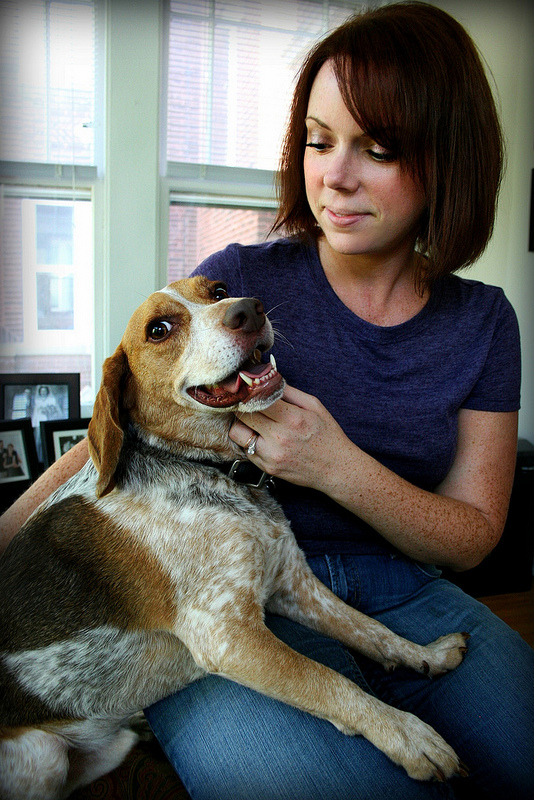April 9, 2013

Hello Rover-Timer!
Spring is in the air! Finally the windows can be cracked and the smell of dog can be lessened. We’ve got some good weather on our hands, thank goodness!
March was busy for us. The house welcomed 16 visitors, one of which stayed for a record breaking 26 nights! I hosted a fun little dog park gathering, joined CanineLink for another great seminar and professional development opportunity where I learned more on alpha and dominance concepts, I became a member of CRAVE Chicago, and I learned how to make truffles. Good truffles at that.
Not bad!
This month as I head out doors for longer stretches of time, I’ve had a group of my clients in mind more than normal: the ones with the pups that have the miserable separation pains from their humans.
The topic is a big one. So let’s skim the surface a bit to help you better understand what separation anxiety looks like verses what dog boredom is and the ways you can help your dog feel better as you head out the door.
Separation Anxiety vs. Dog Boredom
Separation Anxiety symptoms often look like boredom, for example chewing, destruction, indoor accidents, and excessive barking. Determining how your lifestyle is affecting your dog is a helpful first step. How many hours are you gone in a day? What sort of ways are you breaking up your dog’s day?
Fulfilling Their Basic Needs
Most dogs have shortfalls in socialization (with people and other dogs). Many have deficits in mental stimulation (training, toys, and play), and/or physical stimulation (walking, running, or swimming). Make sure your pup gets the chance to engage in all three each day. And if you can’t do it, and we’ve all been there, Rover-Time or another pet services company is happy to help!
No One Likes a Dramatic Goodbye
If you must say goodbye to your dog with kisses and hugs, do it well before you plan on leaving (at least a half hour in advance) and get it out of the way – remember that this is for your benefit – not your dog’s; dramatic goodbyes will only teach him that separation is cause for stress. Wait for calm behavior before greeting your dog upon your return home, and keep the greetings quiet, relaxed.
Identifying Separation Anxiety In Dogs
If your dog’s basic needs are being met and you still suspect separation anxiety, look for the following signs: extreme destruction of property or self (tearing walls apart, bloodying paws trying to escape from a crate, breaking or cracking of teeth trying to escape the house or enter if left outside, anorexia/inability to drink fluids when left alone, inability to be separated from you (even briefly, in another room) while you’re at home, and anxiety behavior related to one specific individual in the household (dog is not relieved by the presence of other household members in the absence of the attachment figure). If you note these symptoms in your dog, consult with a behavioral professional for guidance.
Those of you that need a local referral to someone that can really get under your dog’s issues with separation anxiety should feel free to reach out to me directly. I’m also happy to share my experiences raising our own dog that struggles with this very same issue. The differences we’ve seen since implementing a plan for his success has changed our household and has inspired me to share more about this issue with all of you.
Leave a comment below and share your stories and experiences dealing with separation anxiety as they relate to your dog. We learn from each other.
And remember. Rover-Time is on Twitter. Connect with me there! Follow this blog by signing up to receive emails from it. And share the newsletter with your friends! Or better yet, ask them to sign up for it.

Recent Comments